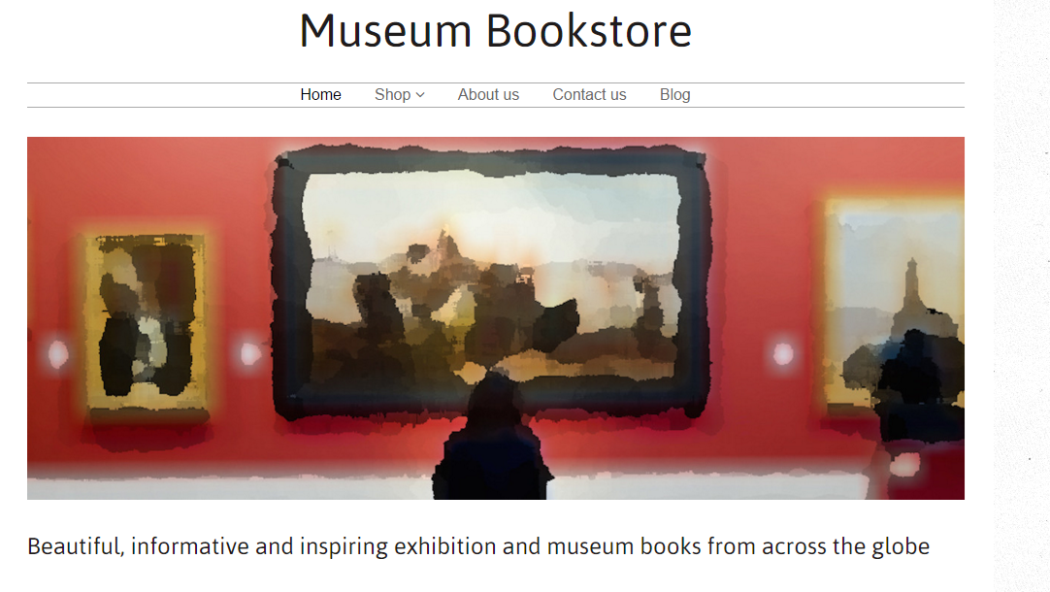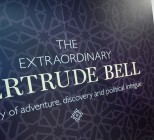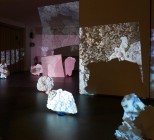What were the reasons for launching Museum Bookstore and what are its aims?
Museums produce some of the most informative inspiring and beautiful books around. After years struggling with heavy exhibition catalogues from bookshops and scrolling through websites trying to find books from past exhibitions, I decided to set up Museum Bookstore.
The idea is to create a single place that draws together exhibition catalogues from museums across the globe – a go-to place for museum lovers whether they want to read up on an exhibition they are about to visit; read more about an exhibition being held far afield or revisit an old favourite show.
I want the store to combine the flexibility of the internet; the convenience of home delivery with the warmth, service and personal touch of a specialist bookstore. All too often, I find technology can be overwhelming on online bookstores and the experience can be a bit soulless.
So we have a tightly edited selection of titles and are working hard to make the shopping experience both straightforward and enjoyable. We are using our twitter @museumbookstore and Pinterest accounts as somewhere museum lovers can find and swap information on exhibitions past and present as well as find out store news.
What kind of publications will you be selling on the website: is it purely books or will there be other museum related material?
We are focusing on exhibition catalogues, collection catalogues and DVDs of exhibitions on screen. We want to stay tightly focussed and concentrate on providing customers with a great shopping experience. We will be adding catalogues from more and more museums as we find them and are keen to expand to offering out of print and hard to find catalogues in due course.
We carry books from world famous museums such as the Metropolitan Museum of Art, the National Gallery and the Louvre Museum as well as lesser known museums such as the Simone Handbag Museum in South Korea and the Museum of International Folk Art in Santa Fe
How will this book depository benefit museum professionals both in the UK and internationally?
Museum Bookstore will give them a convenient and fun place to browse for and buy museum publications from across the globe. It is also a vehicle for museums to find new audiences for their publications and to showcase their incredible expertise and collections. We carry books from world famous museums such as the Metropolitan Museum of Art, the National Gallery and the Louvre Museum as well as lesser known museums such as the Simone Handbag Museum in South Korea and the Museum of International Folk Art in Santa Fe. We are working with a wide range of museum publishing arms as well as third party publishers. I’d love to hear from all museum publishers about their current and forthcoming publications as well as their back list. So do get in touch.
You launched the Museum Freecycle project in June 2014, how has this been received by the sector and has it met your expectations?
When I set up Museum Freecycle I really didn’t know if it was going to work. It was the first industry freecycle group in the world, so there was nothing to compare it to. The group now has more than 500 members from across the UK and is being used actively. The feedback I have received has been really positive. Members find it an easy way to dispose of unwanted goods and a great way to find ‘new’ free equipment.
Since it was set up, Museum Freecycle has helped the museum sector become more sustainable by preventing good quality, reusable museum items from reaching landfill. It has also enabled museums to develop and upgrade their visitor experience for no cost. Last year, the volunteer-run Bloxham Village Museum replaced their homemade donations jam jar with a beautiful purpose built donation box from the Natural History Museum, which they sourced through Freecycle. Since then, they have increased their donations significantly.
How many objects have been put on the Freecycle site since then and how many have been upcycled?
Museum Freecycle has helped museums exchange scores of display cases, mannequins, plinths, storage boxes, office furniture, lighting as well as other weird and wonderful museum items. We currently have a diorama representing a plague scene in 17th century Rome on offer – I am not sure if that has gone yet. Recently, we had two rather stern-looking life size mannequins – one of a Royalist and one of a Parliamentarian. They were snapped up in minutes.
What lessons do you think the museum sector can draw from the success of Museum Freecycle?
Museum Freecycle has shown how that we can reduce environmental and economic waste in the museum sector by linking museums directly and enabling swaps, gifting and sharing between museums to find a new home for unwanted items. Maybe it’s the economist in me, but I am incredibly excited by the Museum Freecycle model and how it encourages collaboration between museums. I believe that there is huge potential to extend this ‘sharing economy’ model to create other networks of collaboration within the museum sector.
Museum Freecycle really brought home to me how effective the internet can be in enabling people with shared and very specialised interests and needs to find each other, regardless of geography. Time and time again, Museum Freecycle has helped museums looking to exchange even the quirkiest of items (such as stern Royalist mannequins) and find each other in a matter of minutes.











